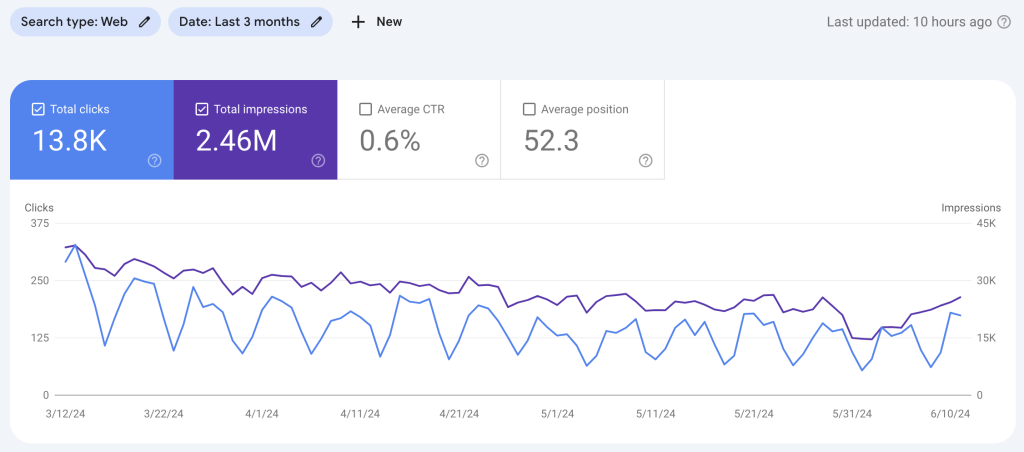Content marketing is more than a B2C marketing technique. It is a critical part of B2B marketing, too. Whether it’s a blog post, an email marketing campaign, a webinar, or even sponsored content on a social media platform like LinkedIn, content creation for business clients is an important step in a successful growth marketing plan.
A solid B2B content strategy helps with brand awareness and repeat exposure for your target audience. It provides more touchpoints in the form of educational material that can help your potential customers, establish your authority in your industry, and encourage retention and repeat business.
Need help improving your B2B content marketing strategy? No worries. We’ve got you.
All marketing should be backed up by clear goals. What do you want to accomplish by marketing? Are you trying to gain brand awareness? Do you need to nurture more leads?
Understanding your overall B2B marketing objectives can help you set effective goals for your content marketing strategy. If you want to build awareness, you can create content that emphasizes thought leadership. If you need more traffic, content focused on assisting SERP rankings should be a priority. If you’re trying to retain or recapture customers, how-to’s and other customer support content can be a winner.
Along with understanding your goals, you want to conduct research. You may think you know your audience, but is that information fleshed out and up to date from a digital marketing perspective? Take a fresh look at who you’re catering to with your content. Try to answer these questions:
You can use Google’s “People also ask” (PAA) as a starting point for your research. Google Analytics 4 (GA4) is another great way to glean customer insights and learn how your audience behaves and interacts with your existing content.
Before you begin creating B2B content (which is a time and resource-intensive activity), make sure your existing content is up to date. The best way to do this is to conduct a content audit.
Start by reviewing the B2B content you already have. Is it organized, formatted with consistency, and well laid out? Does it stick to your primary areas of expertise? (This is a big deal, especially after what we learned from Google’s documentation leak.) Does your B2B content answer customer pain points and highlight benefits as well as features?
Consider what kind of content you have, too. Blog posts are a great top-of-funnel strategy. But do you have gated content, like case studies, demos, webinars, and e-books, to guide a potential customer down the sales funnel? Along with on-site content, set up off-site channels like social media and email.
As you audit, don’t be afraid to optimize or even delete existing pieces of B2B content that are not performing well. Set up tools like SEOMonitor (a favorite of ours), SEMRush, or Ahrefs to see how your quality content performs in the SERPs. Use GA4 and Google Search Console to expand those data sets and see if organic traffic from content is converting when it gets to your site.

Once you’ve evaluated the content you do have, consider what you’re missing. For example, if you have a lot of top-of-funnel B2B content, such as social media posts, 101 blogs, and how-to explainers, you may want to create something more targeted to guide users down the sales funnel. Also, ensure all of these posts are interlinked, feed into each other, and have solid touch points, like email marketing drip campaigns, that work together to move readers down the sales funnel and encourage them to take the right actions.
As you figure out your B2B content creation strategy, stay focused on your area of expertise. Center all of your content on “pillars” or “clusters” that display comprehensive coverage of focused messages that are integral to your business. Demonstrate your knowledge, as well, to meet Google’s E-E-A-T standards (experience, expertise, authority, and trustworthiness).
If you’re having trouble coming up with relevant content ideas, you can use a tool like Buzzsumo or AnswerthePublic to generate ideas based on your keywords and content needs. You can often get quality content ideas from existing customer feedback and competitor research, as well.
As you create quality content, you need to think about how you’ll get it in front of the right audience. The key is to set up an effective content distribution strategy.
What channels best reach your audience? What social media platforms do they use? Do they engage with e-books? Workshops? Emails? Discord communities?
Hone your distribution network and then share your content as it is published. If you create something longer, like an e-book, use it to create supplemental checklists, blogs, and social posts based on pieces of the information.
Once you’ve distributed your content, track it. Use analytics and SEO tools to see how your content performs in the SERPs. Observe how it converts and what kind of traffic it gets over time, too. (It can take a few months before onsite content performance becomes consistently.)
As you gather data, start conducting quarterly content performance audits to look for weak points. If content isn’t performing, how can you optimize it to give it a better chance for success? This is an area where working with a growth marketing agency can help. An informed third-party perspective can call out where content is coming up short and what you can do to create high-quality pieces that can perform for the long term.
Content marketing is an important part of B2B activity. If you want your products or services to resonate with the business clientele you target, make sure to back it up with a thoughtful, comprehensive, and engaging content library. If you’re struggling to create an actionable B2B marketing strategy, we can help. Contact our team for a free strategy session. Together, we can get your B2B marketing strategy moving in the right direction.